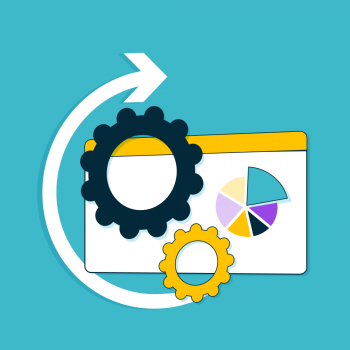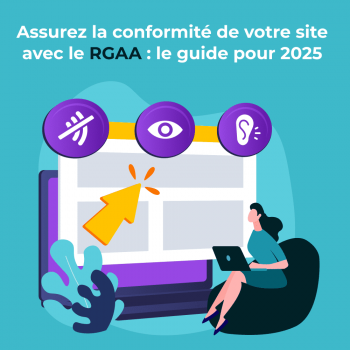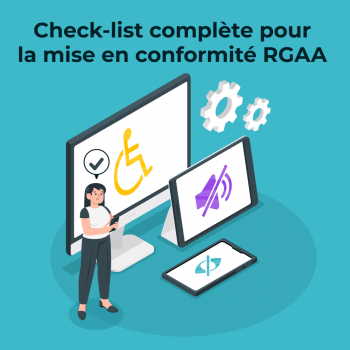What is SEO? What is it used for?
SEO is the acronym for Search Engine Optimization. It is the art of positioning a site, a web page or an application in the first natural results of search engines. In French, we speak of natural referencing.
The optimization of natural referencing, or SEO, consists essentially in respecting the good practices and recommendations made by search engines, especially Google. The position in the SERPs (Search Engine Result Page) is obtained from the relevance score attributed to the page by the search engine algorithm on a given query.
Having a good positioning is important because it allows to attract qualified traffic with a high conversion potential and gives visibility to your website on the long term. Knowing that in general a user looking for a precise answer to his query mainly browses on the first page of search, you have every interest in being positioned in the first results of search engines.
In this article we will talk specifically about good practices for On-Page SEO or On-Site SEO, which consists of optimizing the pages of your site so that they are well positioned on search engines. We apply all of these best practices to all of our projects, from the design phase to project launch.
To make sure we haven't forgotten anything, we also have a quality control step with a checklist to make sure everything is in order, this is our SEO methodology focused on the quality of the projects.
If you need support, please contact us. Our experts will be happy to help you.
What is the difference between On-Page SEO and Off-Page SEO?
These are two different techniques that consist of optimizing the natural referencing of your site.
On-Page SEO is one of the levers of Digital Marketing that encompasses all the techniques to improve the positions of your website pages in search engines. This includes:
• Technical aspects on your website,
• Semantic optimizations on each of your pages,
• External actions to increase the popularity of your website.
As main actions we can have in the On-Page SEO, we can list you:
- Tagging and tag structure (Hn)
- Content density and keywords
- The meta-tags
- Loading speed (Desktop / Mobile)
- CSS and image weight optimization
- Creating links or internal meshing
- Avoiding duplicate content
- The importance of the sitemap
As mentioned above, we will then base ourselves only on the good practices of On-Page SEO.
Some practical advice to have a good natural referencing:
– Structure and hierarchy of the content of your site
To simplify, this is the tree structure of the site:
- A main page (also called parent page)
- Secondary pages (or child pages)
So that the content of your site is well structured. Google appreciates well-defined tree structures and especially that each grouping addresses specific themes.
We can also, in this perspective, find the notion of "semantic cocoons", that is to say, the groupings of content on a certain topic or category.
At Ylly we say that SEO is like the index of a book, you have to organize the chapters and sub-chapters in a way that they are relevant and unique. Search engines do not like duplicate content.
– Tagging and tag structure (Hn)
The tree structure already allows us to know how to prioritize the content of our site, the tagging helps us to better prioritize the content of a specific page.
The tagging or tag structure is therefore the way to organize your titles and subtitles from the most relevant to the least relevant.
H1 tags are development specific tags. Nevertheless, their function is identical to titles or subtitles that can be done in WORD for example.
In addition to the tags and titles, it is also important to specify the concept of meta-tags, used to display the content on the SERps:
Meta-Title: the title that we see on the SERP.
Meta-Description: the description that we see on the SERP.
- From the Title tag to the meta-description, through the Hn tags of your articles: everything must be worked carefully.
- The main keyword must be present, as well as the secondary keywords. Titles must be short and punchy
- Tags and titles must be unique, only one per page
- Do not neglect the descriptions for the images (alt-tags), they are also important for the visibility of your company
- Remember to respect the correct length of each tag / title
– Content density and keywords
What is an interesting content for Google?
- An original page without duplication
- Minimum 500 words
- 10% of these words are your keywords
- Ask Google not to index pages that do not have added value for SEO (e.g.: shopping cart, my account, contact..)
We rely on OnCrawl, a paid tool that allows us to check the density of content per page and overall sites.
– Loading speed (Desktop / Mobile)
Google integrates the notion of performance in its preferred display criteria on the SERP. This means that it will favor a site that is more efficient, that loads faster and that offers a more pleasant user experience to visitors to others that do not.
With the free Google Page Speed insight tool, you will get two scores on a scale of 0 to 100 :
- The first one for the result of your mobile interface
- The second one for your desktop interface
The advantage of this tool is that you can also get the details of the situation of your site:
- The optimizations found
- The possible optimizations
Several other tools exist such as plug-ins: Smart Seo or SEO Audit (Google Chrome extension).
– CSS and image weight optimization
One of the recurring points for improving the performance of a site is the optimization of the images: make them less heavy (optimized for the web) and the optimization of the code, so that it generates the least possible requests before displaying the content to the user.
Among the main techniques, we have :
Code and script optimization:
Enable compression of your scripts!
Minify HTML / CSS / JS, or libraries such as Minify that offer file minification systems.
Resize or compress images:
Software will allow you to perform this operation easily, for example PhotoShop.
On wordpress WP optimize or Imagify
– Create links or internal links
Internal links are a way to encourage users to stay longer on a website because their navigation is facilitated by the various links placed on the same page. This way, you guarantee an optimal navigation on your site. Users will stay longer and Google will consider your website more.
These internal links will help your SEO. They will also increase the authority of your pages by transmitting the "link juice" from one page to another. Do not hesitate to use hypertext links or any other means available to promote user navigation.
With us, these steps are well respected by our designers during the conception of our models.
– Duplicate content
Duplicate content is content that is identical (in whole or in part) to that of another page or another site. Writing texts takes time, but it is a guarantee of quality for Google and it differentiates you from your competitors in the eyes of your users.
Here is how to manage duplicate content:
- Remove identical content from your site.
- Reformulate your version of this content.
- Prevent a page or version from being indexed by Google thanks to a noindex tag or via the robots.txt file.
- Use "canonical" tags to identify to the SERPS that it is the right page for such content.
– The importance of the sitemap
The sitemap must contain all the content of your site, ie pages, files, etc., and must be updated automatically. It is a file in which you give all the necessary information about your site and in which you indicate the relations between pages, files, etc.
Search engines such as Google read this file to explore your site more efficiently, that's why it is important to pay attention to the indexing of your content, the one you consider important on your site.
To conclude
In order to correctly position your website on the search engine results, it only depends on the implementation of these good practices.
Position yourself on the right keywords and pay attention to the density of the content of your pages. Keep an eye on the loading speed for better performance and pay attention to the markup and structuring of your site. Optimize CSS and image weight, favor internal navigation and avoid duplicate content.
With this, you should quickly move up in the search engine results.
If you want to be accompanied by our experts in order to be present on the first results of Google, do not hesitate to send us a message so that we can discuss it








